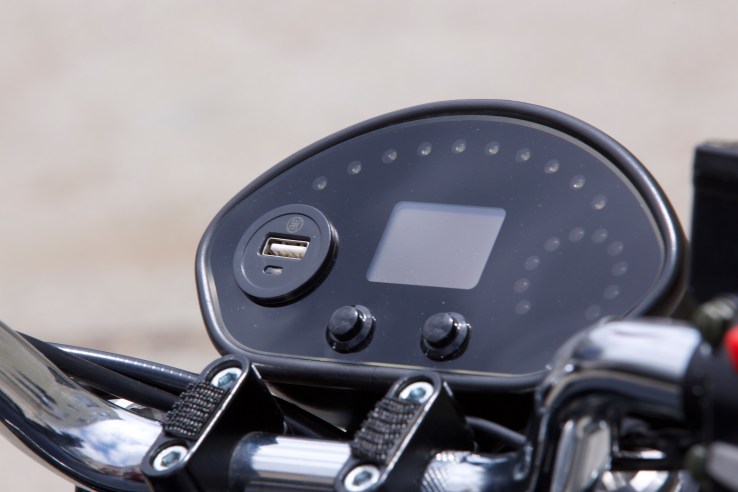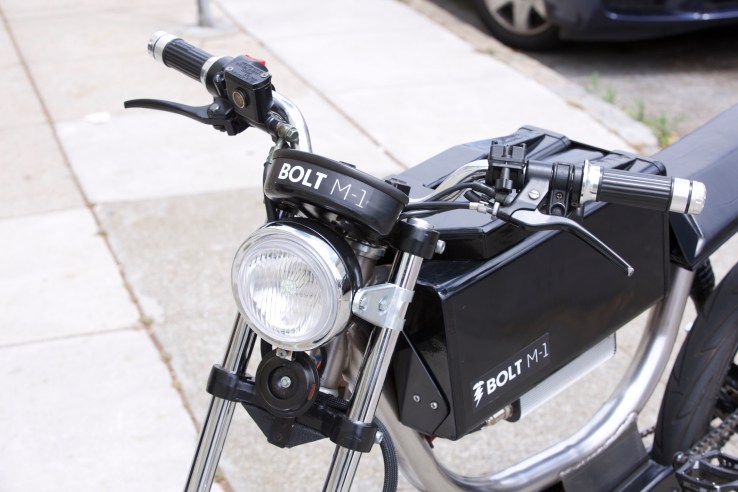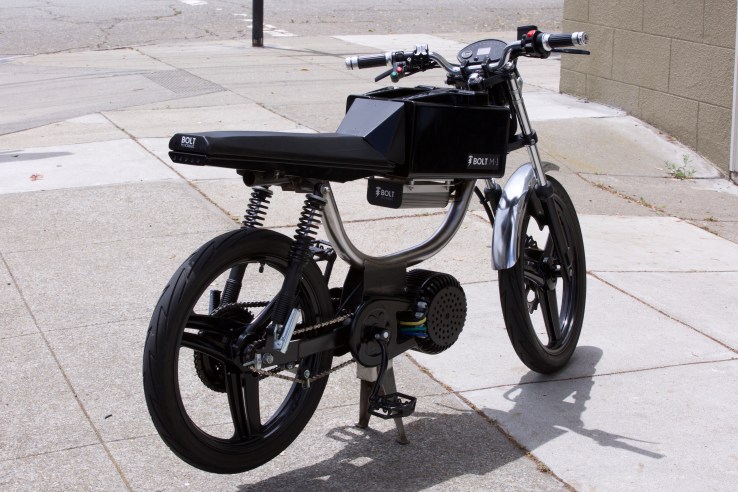
Bolt is a San Francisco-based startup that makes electric motorbikes. The bikes are handmade in a small garage on the edge of town and come with the same type of lithium-ion batteries used in Teslas.
Co-founder Nathan Jauvtis grew up riding and assembling motorcycles and bikes, but he really liked the idea of building his own bike – one that would be clean and easy to ride. He started Bolt out of his garage not long ago and just started taking the first orders for these $5,000 vehicles.
The price seems steep, considering a brand new Vespa goes for a little less than that, but Jauvtis’ bikes also come with a few key tech innovations that set this bike apart from the rest.
The Bolt M-1 is the first Bolt bike off the line. The bike is keyless and can start with a unique passcode or from your smartphone. The Bolt app will locate your vehicle, should any harm come to it. Parents will also enjoy some controls on the app that will allow them to limit the top speed of the bike and keep wild teenagers in check.
The M-1 also comes with a USB port for plugging in your smartphone while on the go.
Bolt bikes start in economy or sport mode, depending on how much power you want to utilize. Economy mode will speed up to 20 mph, and sport has a little more power from the start, revving up to 40 mph.

Economy mode can take the Bolt 50 miles on a single charge and sport mode will go 35 miles on a charge if you are going an average of 35 mph during that time.
Bolt is technically categorized as a bicycle, and you can ride it in the bike lane or lock it up on a bike rack. You also won’t need a motor vehicle license to ride it in the city.
For those living in apartments and no access to a plug for the battery outside, the bike battery splits in two and be carried inside to plug in overnight. The batteries can also get a charge while you pedal. According to the Bolt website FAQ, it takes about 90 minutes for a plugged in charge.
We went to the Bolt garage in San Francisco’s Richmond neighborhood to take it for a spin.

Comments
Post a Comment